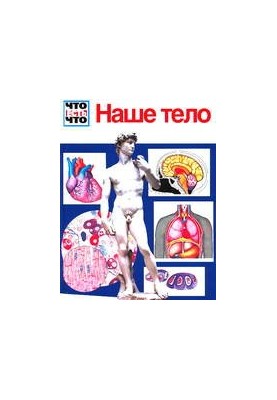Our body
 Instant download
Instant download
after payment (24/7)
 Wide range of formats
Wide range of formats
(for all gadgets)
 Full book
Full book
(including for Apple and Android)
In this book, we describe our body as it is seen by modern scientists. Its history is rooted in the depths of the ancient Ocean, which covered the entire Earth, but is still far from over. In 1543 . The work of Andreas Vesalius “On the structure of the human body” was published the first modern anatomy textbook with accurate illustrations. The book did not have time to be published, as its author was accused of heresy .. But the firmness of Vesalius, his confidence in his rightness, set in motion an avalanche .. The opening follows the opening of the. Scientists are increasingly aware of the structure and physiology of the human body In 1628. English physician William Harvey describes the circulatory system, in 1661 Marcello Malpighi discovers capillaries - an unknown link that connects arteries and veins In 1665. naturalist Robert Hooke established the cellular structure of plant tissues and coined the term "cell" in 1682. botanist Nehemiah Gru discovered that cell walls are formed by fiber interweaving, as in tissue (hence the term "fabric"). Plant cell nucleus described in 1831. Robert Brown . In 1839. Matthias Jacob Schleiden and Theodore Schwann make one of the most significant discoveries in the history of biology: they prove that not only plant tissues, but also the bodies of animals and humans consist of trillions of tiny cells. "What Is What" is a series of thematic encyclopedias published from 1994 to 2001 by the publishing house "Word" and aimed at school-age children. Initially, it was translated materials of a similar German series "Was ist was", but later, as part of the series, the publishing house began to produce works by domestic authors. The abundance of illustrations, fascination, diversity and accessibility of the presentation of the material predetermined the great popularity of the series. "What is What" easy reading - serious knowledge!Other books in the series "What is What":Byzantine Wolves of Heaven. Flags Calendar. Caves of the Cat. Time. Dolls. Butterflies Sculpture. Our Body . Ancient Greeks Ancient myths Myths of Slavs Sun Apes Ancient China . Painting Orbital Stations . Underwater exploration of the Earth Planet Ancient Greece. Trees. Forest. Poisonous plants . Money from Russia . Multimedia and virtual worlds Natural Disasters Mountains Pyramids Museums Travelers . Crusaders Weather. Bees, Bumblebees, Wasps Moors Elephants Fish Birds Ships Gladiators Samurai. Pirates. Water. Bridges . Geographic Maps of the Witch Star. Internet Seven Wonders of the World Predators Nuclear Power Arctic and Antarctic. Indians Horses Dinosaurs Ancient Russia . Moscow Rus Revival . Mysterious Treasure Phenomena . Tropical Forest
LF/317965399/R
Data sheet
- Name of the Author
- Вольфганг Тарновский
Катрин Тарновская - Language
- Russian
- Series
- Что есть что
- ISBN
- 9785850501709
- Release date
- 1998

















